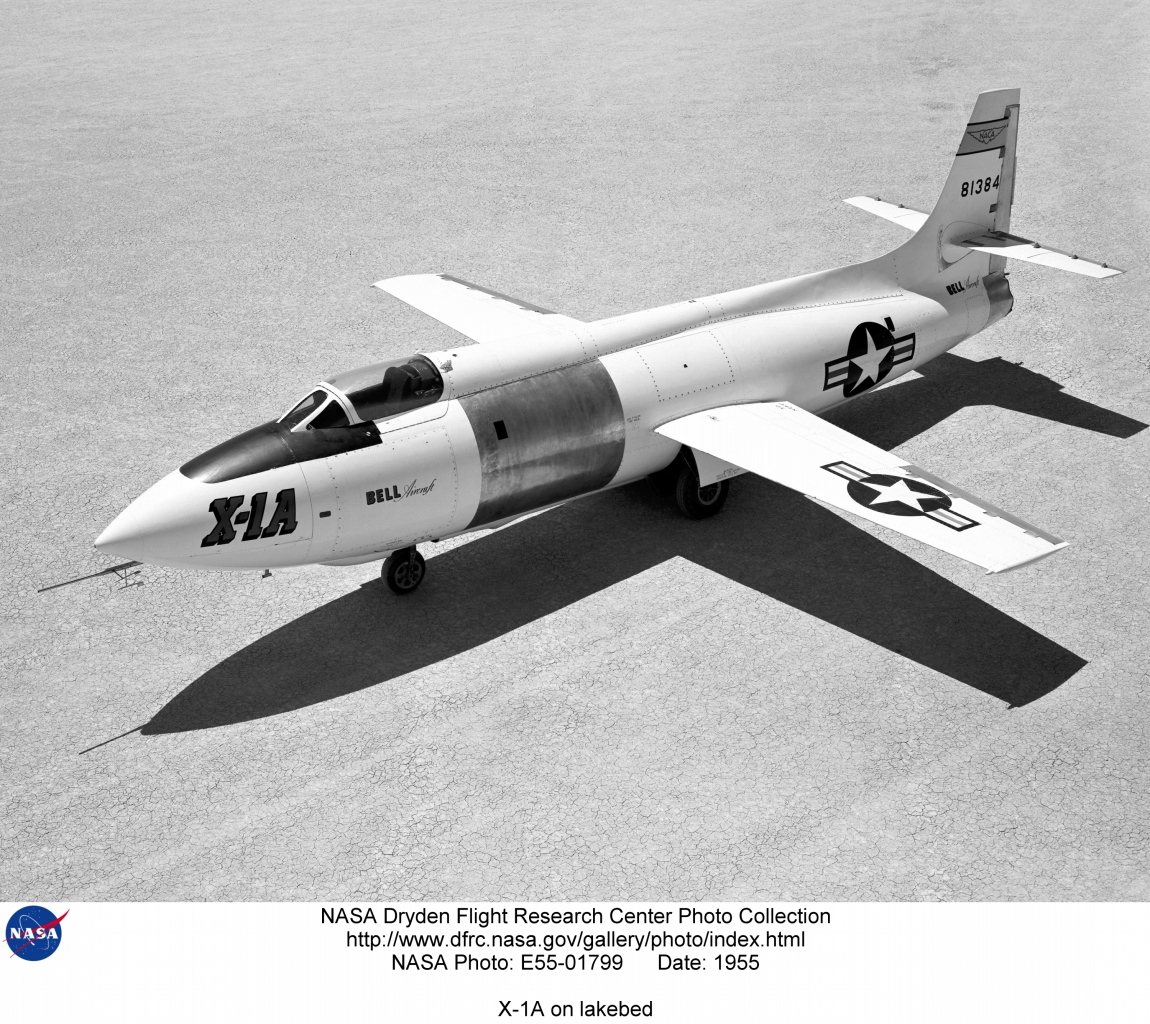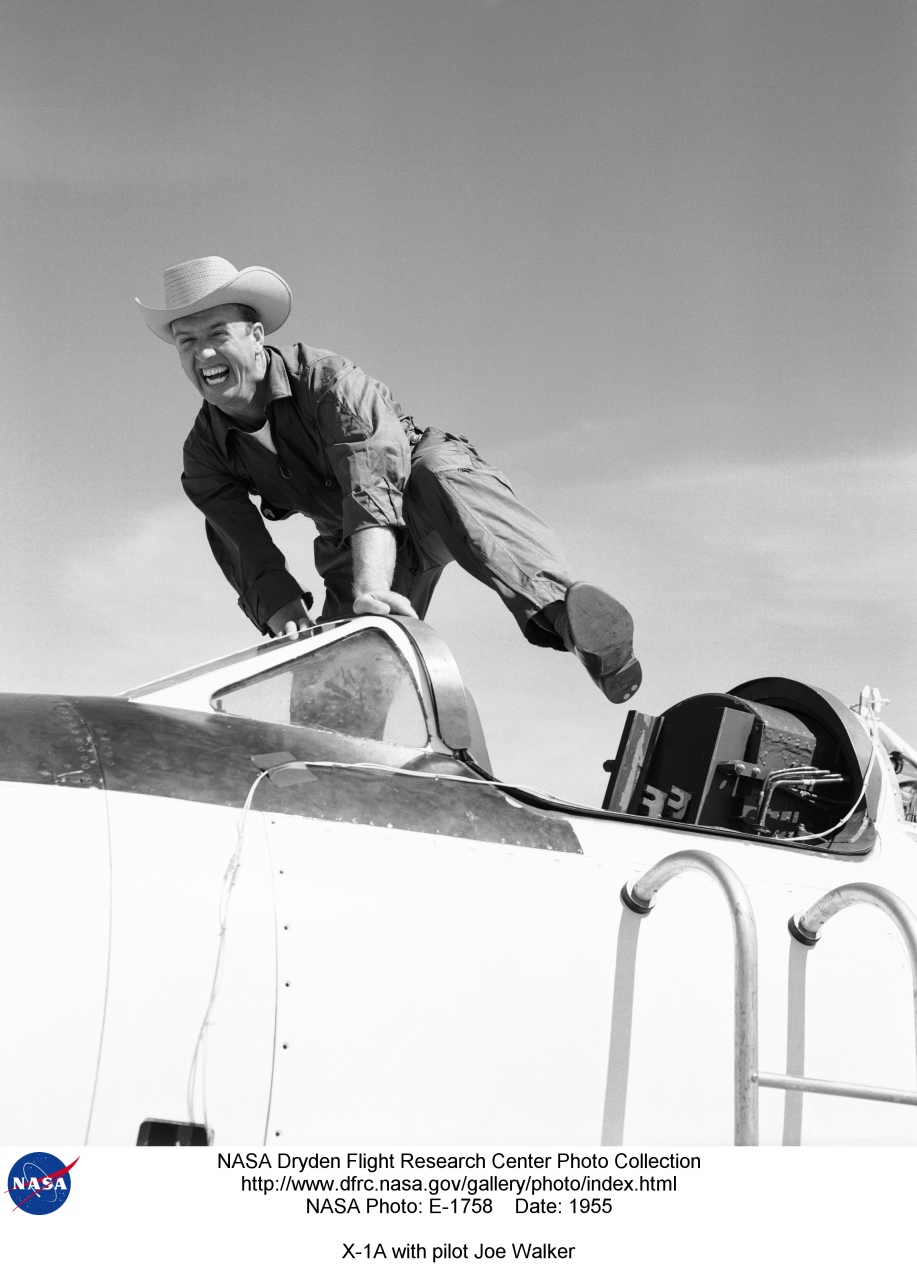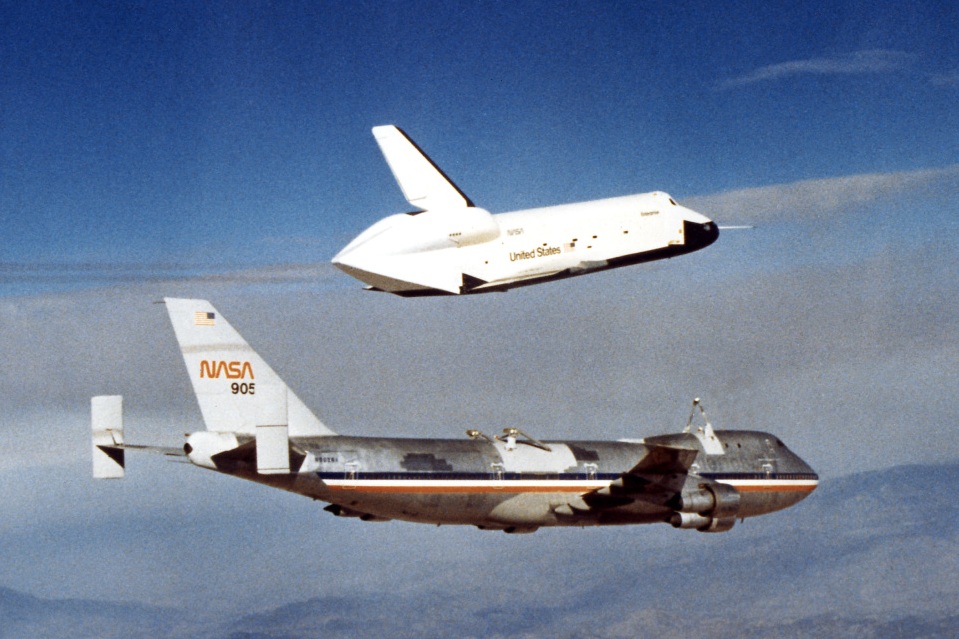

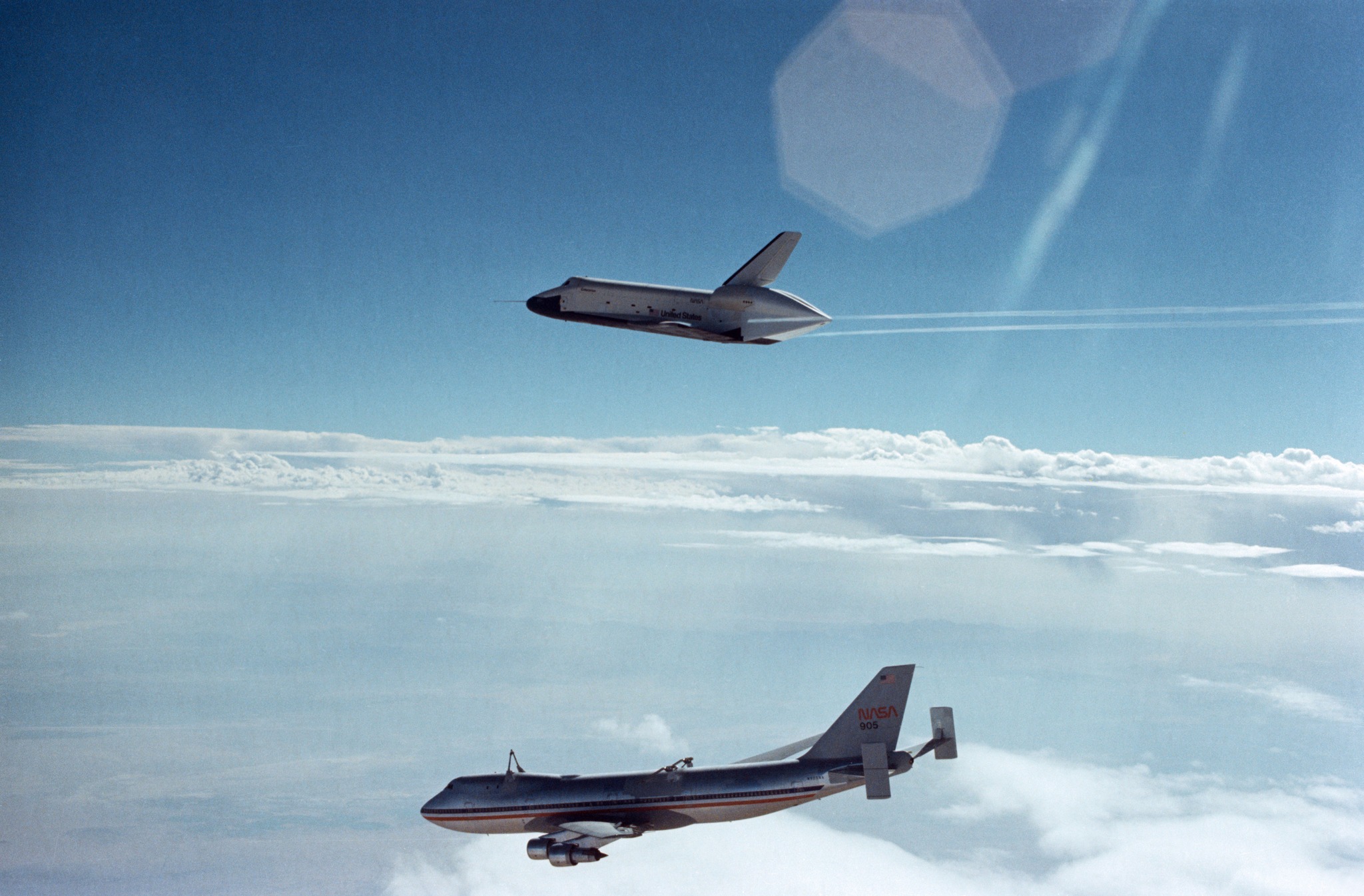
An estimated 65,000 people had come to Edwards to watch and at 8:00, Fitz Fulton began the take off roll down Runway 22. For the next 38 minutes the spacecraft/aircraft combination climbed together into the desert sky. After reaching an altitude of 24,100 feet (7,346 meters), Fulton put the Shuttle Carrier Aircraft into a shallow dive. At 8:48 a.m., Fred Haise fired the seven explosive bolts holding the two craft together. The 747 entered a descending left turn while Haise banked Enterprise away to the right.

As Enterprise made its gliding descent, Haise and Fullerton experimented with the prototype’s flight characterisics and handling. The Shuttle Orbiter touched down on Rogers Dry Lake at 185 miles per hour (297.7 kilometers per hour), and rolled for two miles (3.22 kilometers) before coming to a complete stop.
The first free flight of Enterprise lasted 5 minutes, 21 seconds.
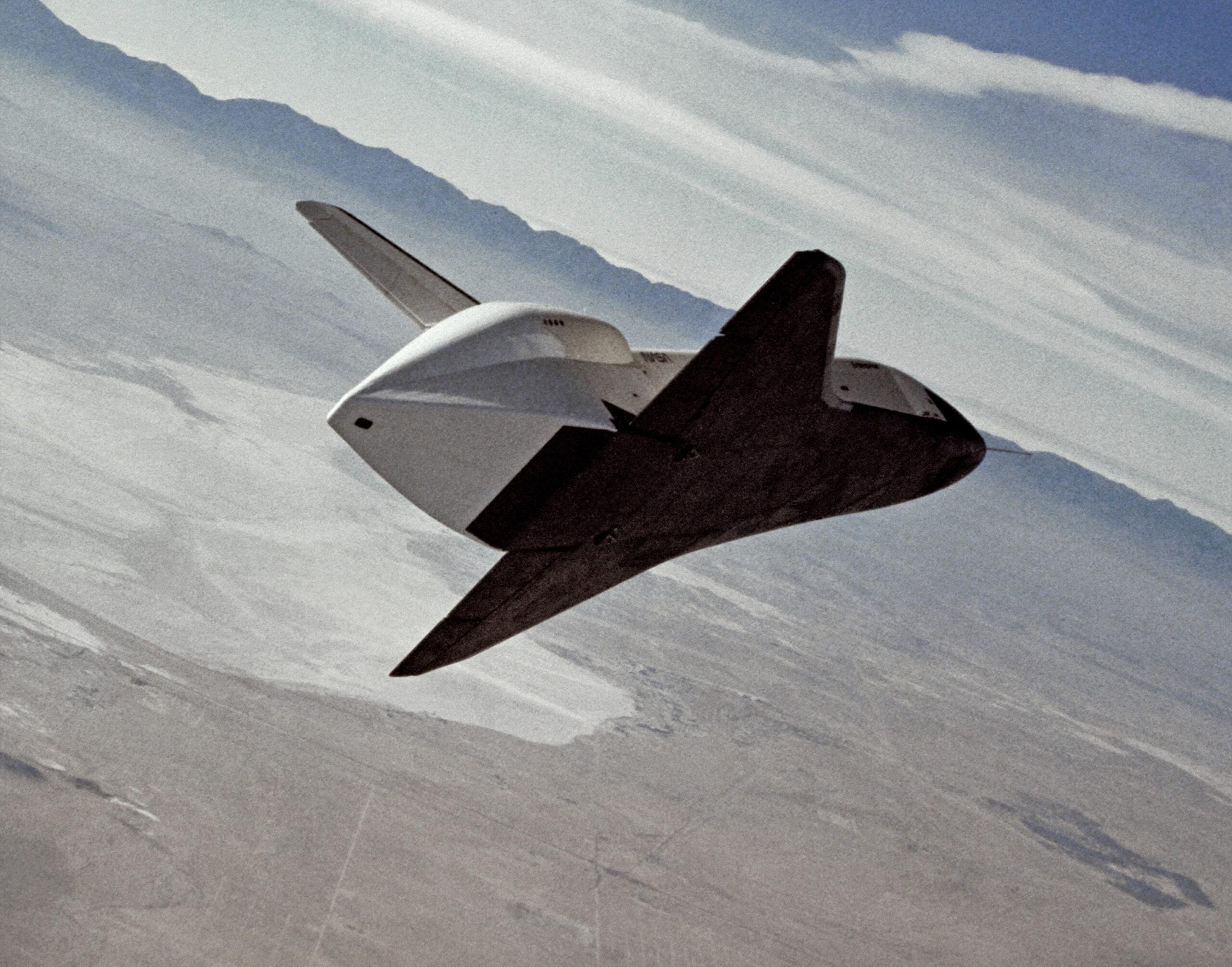
© 2019, Bryan R. Swopes
